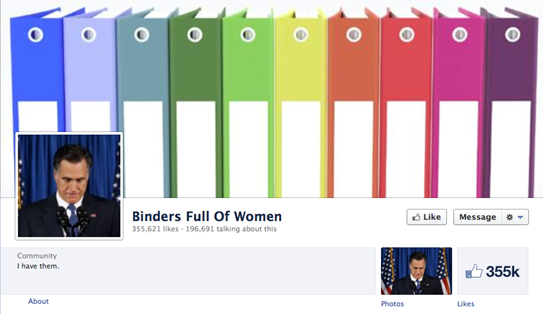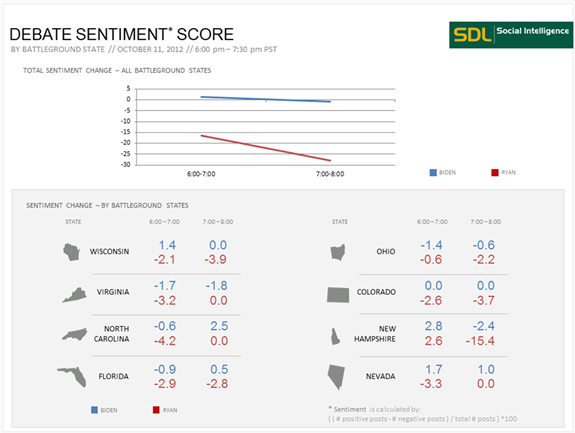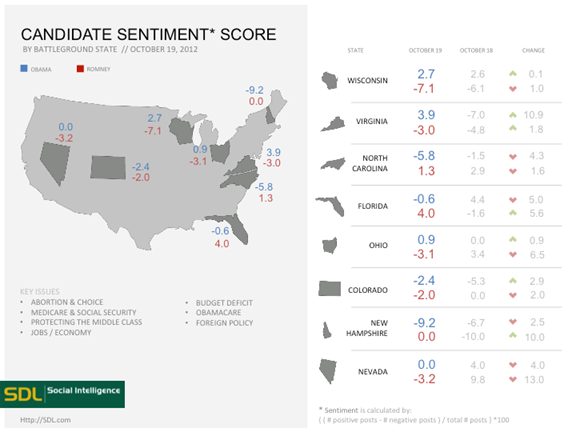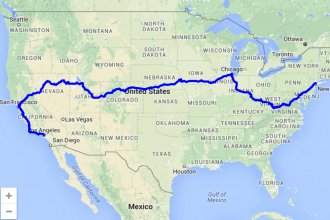This is a guest post by Ralph Fascitelli.
As many are aware, within 24 hours after the second presidential debate, an amazing, visceral, flash movement on Facebook had exceeded a third of a million fans. “Binders Full of Women,” a spontaneous reaction to a hollow sounding, debate response by Mitt Romney, had reached 334,000 Likes on Facebook (now at 355,621 Likes).

In an election this close, at this late a stage, where women represent the majority of the undecided, the significance of this spasm on social media is hard to overestimate. These Facebook followers are more than just voters, these are fired-up friendship networks residing in a digital petri dish where viral movements can replicate and escalate literally in a matter of seconds. And the average individual network is extensive given the typical Facebook member has 130 friends each. Do the math, and the ‘binders’ crowd can potentially reach more than 32 million users, even after accounting for a 25% mutual friend ratio. Knock off another 10% who are under voting age or non-US residents and you still have a potential voting group of almost 30 million that can be reached through the Binders fan page.
Seasoned marketers know that there are three levels of influence in impressions. The first and least powerful user impression, all things being equal, is company paid advertising because it fall shorts in credibility (i.e. all advertisers are going to put the best possible spin on their products). The second level of impression is public relations and articles by third parties, because there is a higher level of objectivity in what’s being said. But, the gold standard is a word of mouth advertising impression from one friend to another, because it is not only credible but also relevant (the friend has inside knowledge of you and your needs and situation). And this is precisely why the Binders Full of Women movement is so important, because it has the credibility and relevance of friend-to-friend communication; the type of endorsement that cannot be bought.
We saw a preview of the Binders backlash on social media earlier this month in the vice presidential debate. SDL, a social media monitoring client of mine, is doing daily tracking and post-debate polls in eight swing states. After Congressman Ryan fumbled a question of the Republican party’s position on abortion, his social media sentiment score dove from a positive +2.6 in the first hour of the debate to a negative -15.4 in the last portion of the debate in the state of New Hampshire. This is by far the most significant and sudden shift we have seen in any state in almost a month of tracking.

Political strategists on both sides know there are two ways to win this election. They can try to convert the 5% of likely voters who remain stubbornly undecided in the face of hundreds of ad impressions per voter for each candidate; or the campaigns can turn their attention and try to motivate the 20% of registered voters who typically don’t vote in a given presidential election.
Both sides grasp that a sense of injustice over equal pay for women, or possible reversal of a women’s right to choose, fired up in the furnace of digital media, can be the catalyst that gets otherwise politically averse women to the voting booth. That is why it’s a battle for the female vote through Election Day. Romney was closing the gap after his impressive first debate among women, but the Binders movement threatens to create an Obama firewall.
Women typically favor the democratic presidential candidate because they are more likely than men to be aligned with them on progressive causes such as gay marriage, gun control, and of course, women’s issues, including choice and equal pay. What makes social media the perfect medium for motivating both undecided and apathetic female voters is that 57% of Facebook users are female and 55% of Twitters users. Moreover this is an educated audience, with 81% of Facebook users having completed at least an associate’s degree, according to a study published in Mashable by Onlinemba.com.
Facebook is not the only outlet for the Binders revolt. The same movement has a Twitter account, @RomneyBinders, which has another 33,000 followers. Amazon is being inundated by “tongue-in-cheek” reviewers for binder products. And the Internet went crazy with Binders Full of Women memes, with BindersFullofWomen.com and a Tumblr account with the same name displaying hundreds of images poking fun at Romney and his new catch phrase.

The current landscape with about two weeks left suggests a scenario, according to Nate Silver’s 538 blog in the New York Times, where Governor Romney will most likely win Florida and North Carolina, and the fight will come to a handful of states including Ohio, Iowa, New Hampshire, Wisconsin and Colorado. SDL’s most recent daily tracking report shows Romney leading in positive sentiment in North Carolina with +1.3 and Florida with +4.0 , supporting Silver’s prediction. Obama had a positive score in Wisconsin, Ohio and Virginia, where his sentiment score increased +10.9 points.

So, the significance of the Binders social media revolt could be nothing less than determining who the leader of the free world will be. A state like New Hampshire has far less than a million voters for a typical presidential election. Current polls show a dead heat there. It could come down to very few votes that determine the election, which could jolt some of the registered non-voters to cast their vote.
Pay attention the rest of the way to what’s happening on Facebook, Twitter and other online forums for this is where the political energy resides and where the election may indeed be won. Every week, SDL posts an issues report on the most discussed topic on social media in a given state. If you see a big jump in the share of online voice for abortion, then you will know the Binders movement has legs.
Both campaigns will pull out all the stops from retargeting ads on Facebook to re-Tweeting the latest “We are for women” campaign ad. If Obama’s female advantage comes in above 10% in the final vote, the odds are he will retain the presidency, and in all likelihood, he will have social media and the Binders revolt to thank for that.
This is a post by Ralph Fascitelli, Seattle civic activist, political enthusiast and President of Resonance Public Relations (ralph [at] resonance-pr.com). His client SDL provides a daily tracking poll on candidate sentiment scores for eight swing states found at http://www.sdl.com/campaign/si/presidential-report.html





Comments are closed.